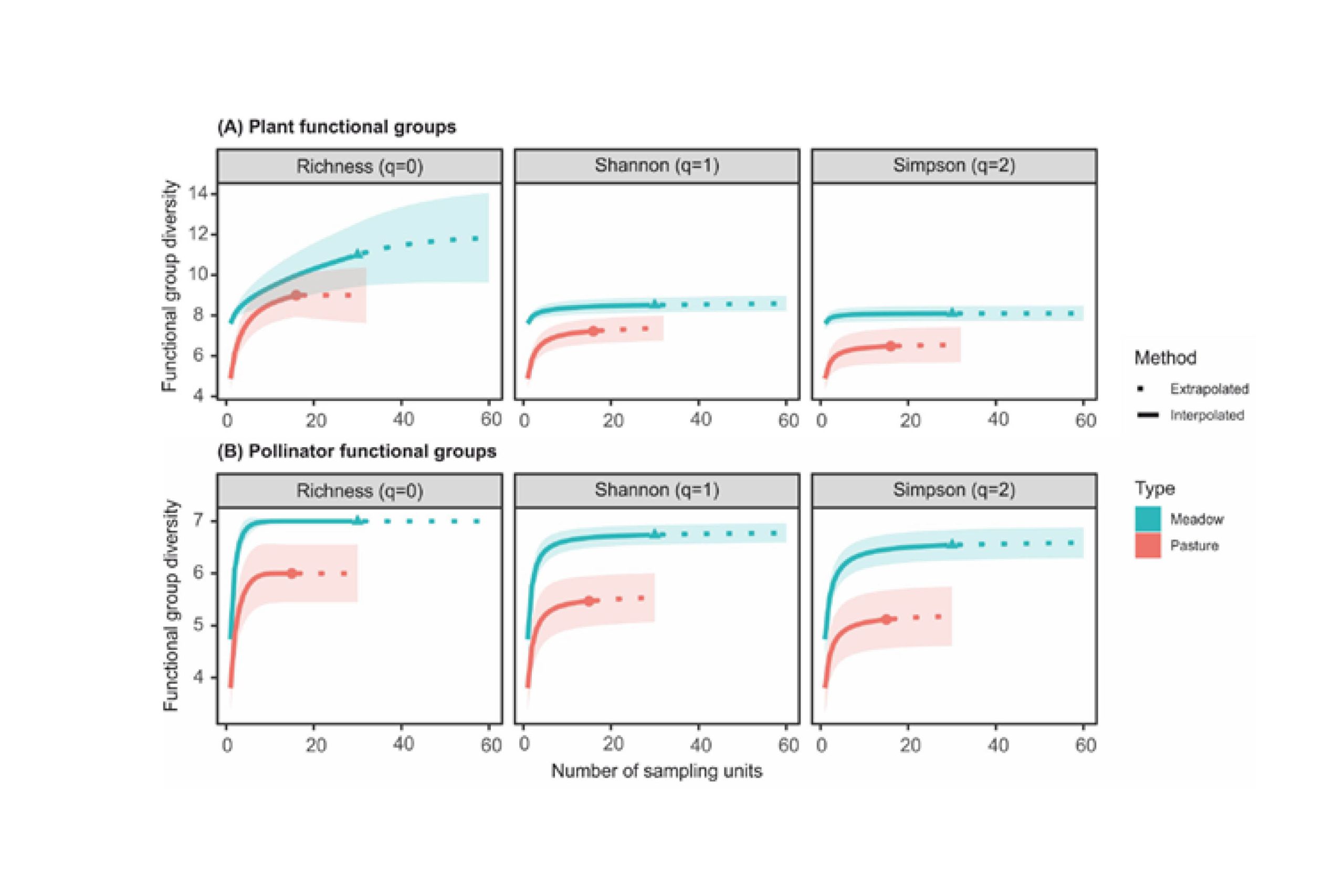Praca jest pokłosiem współpracy prof. Arkadiusza Nowaka z zespołem prof. Tiffany Knight z Kalifornii. Jej celem było rozwikłanie złożonych relacji pomiędzy różnorodnością zapylaczy a intensywnością użytkowania i typem pastwiska. Wykonana została na pograniczu polsko-czeskim w Górach Opawskich. Na tradycyjnych łąkach kośnych i intensywnych pastwiskach w Europie Środkowej porównaliśmy różnorodność i bogactwo grup taksonomicznych i funkcjonalnych, strukturę interakcji roślina-zapylacz oraz role poszczególnych gatunków w sieciach zależności. Stwierdziliśmy głównie niższą różnorodność taksonomiczną i funkcjonalną roślin i owadów na intensywnych pastwiskach, a także istotne różnice w składzie między dwoma typami użytków zielonych.

Abstract
Complex socio-economic, political and demographic factors have driven the increased conversion of Europe’s semi-natural grasslands to intensive pastures. This trend is particularly strong in some of the most biodiverse regions of the continent, such as Central and Eastern Europe. Intensive grazing is known to decrease species diversity and alter the composition of plant and insect communities. Comparatively little is known, however, about how intensive grazing influences plant functional traits related to pollination and the structure of plant-pollinator interactions. In traditional hay meadows and intensive pastures in Central Europe, we contrasted the taxonomic and functional group diversity and composition, the structure of plant-pollinator interactions and the roles of individual species in networks. We found mostly lower taxonomic and functional diversity of plants and insects in intensive pastures, as well as strong compositional differences among the two grassland management types. Intensive pastures were dominated by a single plant with a specialized flower structure that is only accessible to a few pollinator groups. As a result, intensive pastures have lower diversity and specificity of interactions, higher amount of resource overlap, more uniform interaction strength and lower network modularity. These findings stand in contrast to studies in which plants with more generalized flower traits dominated pastures. Our results thus highlight the importance of the functional traits of dominant species in mediating the consequences of intensive pasture management on plant-pollinator networks. These findings could further contribute to strategies aimed at mitigating the impact of intensive grazing on plant and pollinator communities.
Rakosy, D., Motivans, E., Ştefan, V., Nowak, A., Świerszcz, S., Feldmann, R., Kuehn, E., Geppert, C., Venkataraman, N., Sobieraj-Betlińska, A., Grossmann, A., Rojek, W., Pochrząst, K., Cielniak, M., Gathof, A., Baumann, K., Knight, T. 2021. Intensive grazing changes the diversity, composition and structure of plant-pollinator interaction networks in Central European grasslands. Plos One 17(3): e0263576 doi.org/10.1371/journal.pone.0263576
